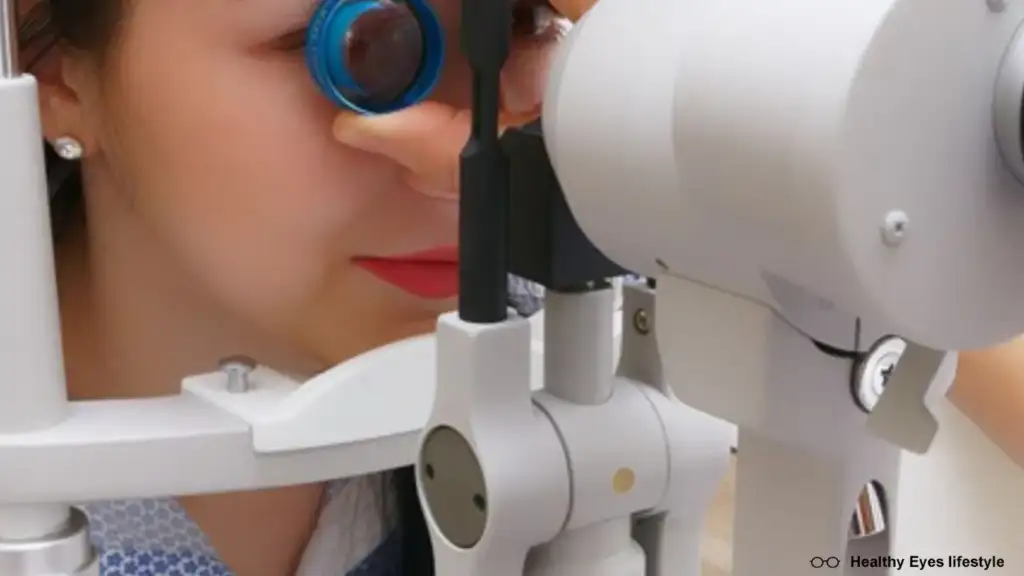Share This Article
Table of Contents
Imagine a world where your vision gradually fades, where the faces of loved ones blur, and even familiar surroundings lose their clarity. For older adults, managing glaucoma is more than just a medical task—it’s about preserving the vibrancy of life, maintaining independence, and continuing to engage with the world. Whether you’re living with glaucoma yourself or supporting a loved one, understanding the condition and knowing how to manage it can help navigate this journey with confidence and clarity.
What Is Glaucoma, and Why Are Older Adults at Higher Risk?
Glaucoma is an eye disease that damages the optic nerve due to increased pressure in the eye called intraocular pressure. Over time, this damage leads to a gradual loss of vision, primarily affecting peripheral vision before advancing to the central field. As we age, our risk of developing glaucoma rises significantly, with adults over 60 being at the highest risk.

Types of Glaucoma in Older Adults
There are different types of glaucoma, each affecting vision in unique ways. Here’s a brief overview of the most common types that older adults may encounter:
| Type of Glaucoma | Symptoms | Risk Factors | Treatment Options |
| Open-Angle Glaucoma | Slow vision loss, no pain | Age, family history, diabetes | Eye drops, laser, surgery |
| Angle-Closure Glaucoma | Sudden pain, nausea, halos | Age, genetics, farsightedness | Laser, emergency treatment |
| Normal-Tension Glaucoma | Gradual vision loss, no pain | Cardiovascular issues | Eye drops, surgery |
The prevalence of glaucoma increases with age, with up to 10% of people over 80 affected. Genetics, existing medical conditions, and specific eye characteristics can also influence one’s risk level. Regular screenings and an awareness of symptoms can significantly aid early detection, especially since glaucoma often progresses without warning signs.
Recognizing the Symptoms of Glaucoma in Older Adults
One of the most challenging aspects of glaucoma is its subtlety in the early stages. Symptoms often go unnoticed until vision loss becomes apparent, making regular eye exams essential. If you or a loved one experience any of the following, consult with an eye specialist:
- Blurred or Hazy Vision: Gradual blurring, particularly in peripheral vision, is a common early symptom.
- Loss of Peripheral Vision: In advanced stages, “tunnel vision” may develop.
- Halos Around Lights: Seeing rings around lights, particularly in dimly lit environments, can indicate rising intraocular pressure.
- Eye Pain or Redness: Although rare, some forms of glaucoma, like angle-closure glaucoma, can cause sudden pain and redness.
Early diagnosis and treatment are vital since glaucoma-related vision loss is irreversible. Routine eye exams that include specific tests for glaucoma can catch this condition before it affects your quality of life.
Tips for Effectively Managing Glaucoma in Daily Life
Medication Management
For many older adults, managing glaucoma often means following a strict medication regimen, typically involving eye drops and, in some cases, oral medications. These treatments help to lower eye pressure and protect the optic nerve from further damage.
- Set Reminders: Taking glaucoma medications at the same time every day is crucial. Use alarms, smartphone reminders, or even sticky notes on your mirror to ensure you never miss a dose.
- Understand Side Effects: Some medications can cause side effects, like eye redness or dryness. If you experience these, consult your doctor to explore alternative options.
- Proper Technique for Eye Drops: Tilt your head back, pull down your lower eyelid, and place the drop in the pocket without touching the dropper to your eye. Wait a few minutes between each drop if you’re prescribed multiple medications.
Sticking to the medication schedule can be challenging, but it’s one of the most effective ways to manage glaucoma and slow its progression.

Lifestyle Adjustments for Glaucoma Management
Everyday habits can support your treatment plan and help keep intraocular pressure stable. Here are some lifestyle adjustments you may find helpful:
- Balanced Diet for Eye Health: Nutrients like antioxidants (from leafy greens and colorful fruits) and omega-3 fatty acids (found in fish) can support overall eye health.
- Manage Blood Pressure: High blood pressure is a risk factor for glaucoma, so keeping it in check through diet and exercise is essential.
- Reduce Caffeine Intake: Consuming caffeine in excess can temporarily raise eye pressure in some individuals, so consider limiting your intake.
- Stress Management: High stress levels can increase blood pressure, potentially affecting eye pressure. Meditation, breathing exercises, or even hobbies like painting or gardening can help.
These small changes in your daily habits can make a meaningful difference in managing glaucoma over time, helping to protect your vision and support overall well-being.
Technology and Tools to Aid Vision
Maintaining independence is important for those with glaucoma, and there are numerous tools and devices designed to assist with day-to-day tasks:
- Magnifiers and Reading Aids: Magnifying glasses or digital readers can make reading easier and help reduce eye strain.
- Apps for the Visually Impaired: Many smartphone apps offer voice-guided assistance, making it easier to navigate or read text.
- Wearable Technology: Devices that detect obstacles or provide navigation assistance can be invaluable, particularly in unfamiliar settings.
Having these tools can increase confidence and independence, allowing those with glaucoma to continue enjoying the activities they love.

Regular Eye Check-Ups: Essential for Monitoring Glaucoma
The cornerstone of glaucoma management is regular monitoring. Eye exams allow your doctor to track any changes in your vision and adjust your treatment plan if necessary.
Key Glaucoma Tests
Your eye specialist may recommend several tests to monitor your glaucoma and determine whether adjustments are needed:
- Tonometry: Measures intraocular pressure to assess if it’s within a safe range.
- Visual Field Test: Checks for areas of vision loss by assessing your ability to see objects in your peripheral vision.
- Optical Coherence Tomography (OCT): This imaging test provides a detailed look at the optic nerve and retina, helping to detect early signs of damage.
Regular visits with your ophthalmologist allow for timely intervention and adaptation of treatment, helping preserve as much vision as possible.
Surgical Options for Advanced Glaucoma in Older Adults
When medications and lifestyle adjustments are not enough to control glaucoma, surgery may become a necessary option. Several types of surgical procedures can help lower intraocular pressure by improving fluid drainage in the eye.
Common Surgical Options
- Trabeculectomy: This procedure creates a new drainage path for fluid, helping to lower eye pressure effectively.
- Laser Therapy: Laser procedures like selective laser trabeculoplasty (SLT) target the eye’s drainage system to increase fluid outflow.
- Drainage Implants: Tiny tubes are surgically inserted to drain excess fluid and reduce pressure.
Each procedure has unique benefits and potential risks, and the choice of surgery depends on factors like your specific type of glaucoma, health status, and overall treatment goals. Recovery time can vary, but following post-operative care instructions is essential for a successful outcome.
FAQ Section: Common Questions About Glaucoma in Older Adults
1. What lifestyle changes can reduce glaucoma progression?
Incorporating a healthy diet, reducing caffeine, exercising regularly, and managing stress can all help support eye health and manage glaucoma effectively.
2. How does glaucoma affect driving ability in seniors?
Glaucoma can reduce peripheral vision, making driving riskier. It’s important to regularly assess your vision with an eye specialist and consider alternatives if driving becomes unsafe.
3. What are the risks of skipping glaucoma medication?
Skipping doses can lead to increased intraocular pressure, risking further damage to the optic nerve. Consistency is key to preventing vision loss.
4. How often should older adults be screened for glaucoma?
Adults over 60 should have an eye exam every 1 to 2 years, or more frequently if they’re at high risk for glaucoma or have a family history of the condition.
Conclusion: Preserving Vision and Quality of Life with Glaucoma Management
Living with glaucoma requires consistent management, support, and understanding. But with the right treatment plan, lifestyle adjustments, and regular medical care, it’s possible to preserve vision and maintain quality of life. Empower yourself or your loved ones with knowledge, follow recommended medical advice, and remember that even small changes can make a big difference. Staying proactive in managing glaucoma ensures you continue to enjoy the beautiful details of life.



